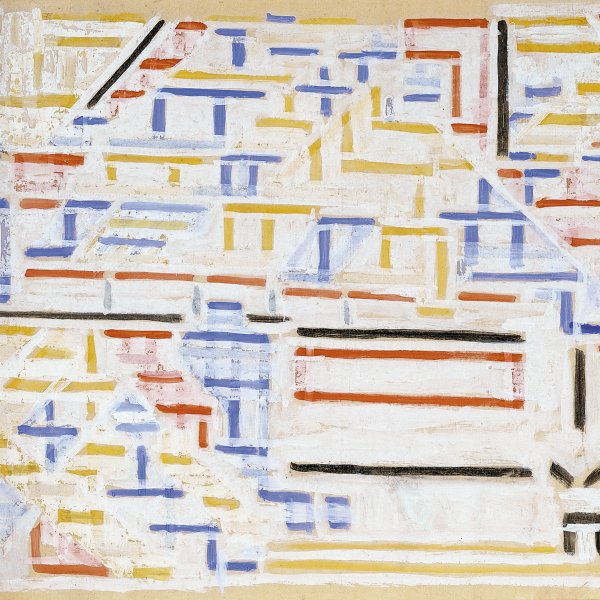Bart van der Leck
Bart van der Leck was a founding member of the Dutch review De Stijl. His interest in blending painting and architecture largely contributed to creating the new relationship between art and life that characterised Neo-Plasticism.
Van der Leck began training as an apprentice in various stained-glass window workshops of Utrecht and continued at the National School voor Kunstnijverheid and the Rijksakademie van Beeldende Kunsten in Amsterdam from 1900 to 1904. He designed furniture and made drawings with his architect friend Piet Klaarhamerb and from 1912 onwards enjoyed the backing of the critic and dealer Hendricus Petrus Bremmer and the collector Hélène Kröller- Müller, for whom he designed many projects. During these years he became interested in depicting the Dutch working-class world in a realistic style: washerwomen, textile factory workers and fishermen’s wives, among others.
Between 1912 and 1915 Van der Leck’s art evolved towards an abstraction dominated by primary colours and white backgrounds. At this stage in his career he met Piet Mondrian in 1916. This contact, which was to prove fundamental in the artistic development of both painters, materialised in a greater tendency towards the objectivisation of art. During the brief period he was involved with De Stijl, his conviction of the need to integrate painting and architecture had a determining influence on the rest of the group’s members. It was precisely disagreement over the role that should be granted to architects in the magazine that spurred him to leave the group a few months later. Thereafter he lived in Blaricum, and in the works he produced there he never completely severed his links with the visible world and gave abstract expression to animals and members of his family. Only at the very end of his life did he arrive at fully-fledged abstraction.





